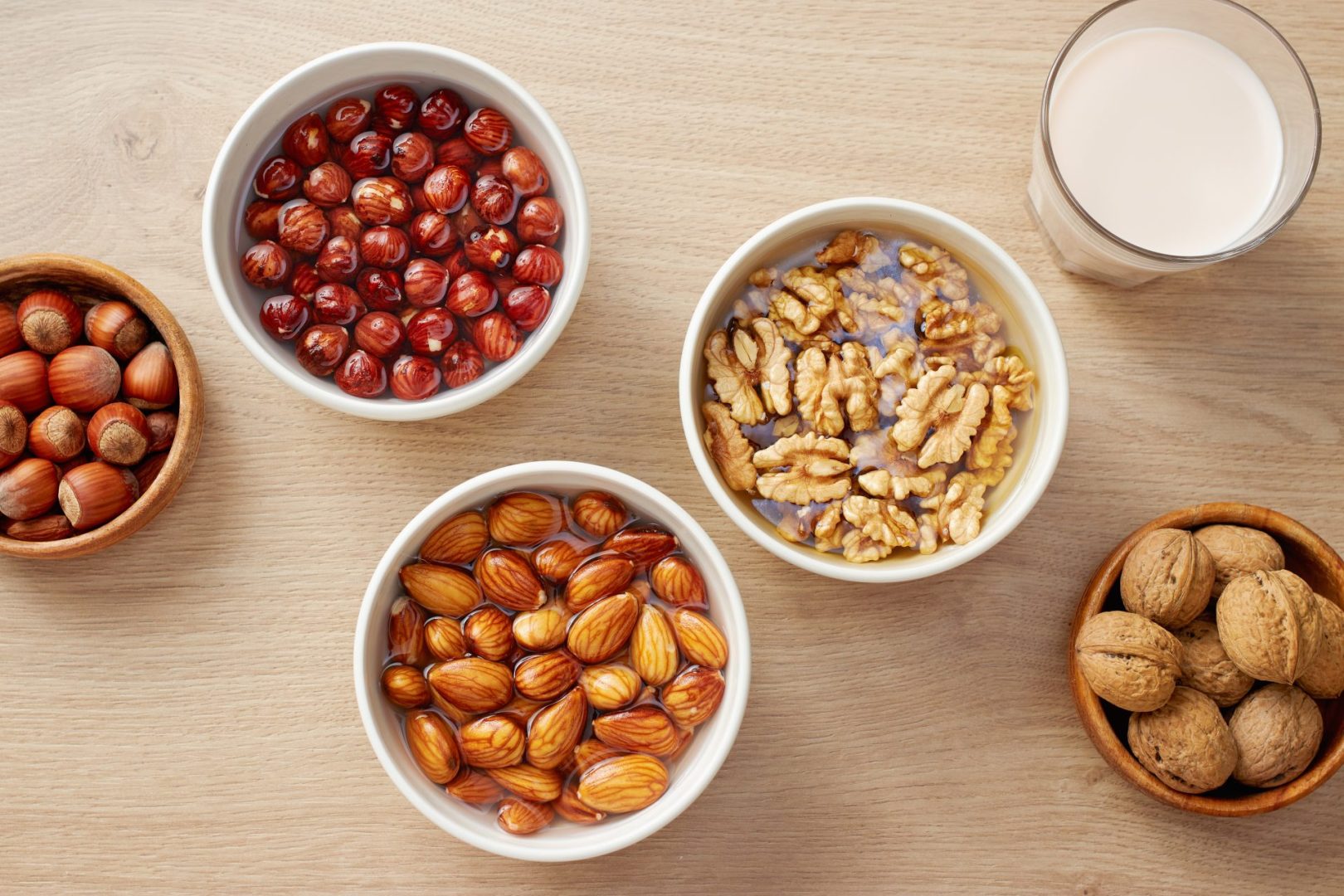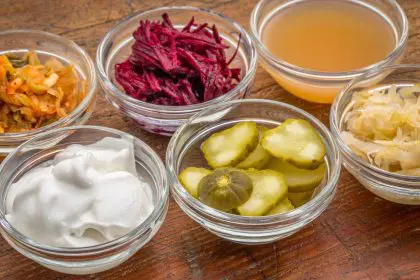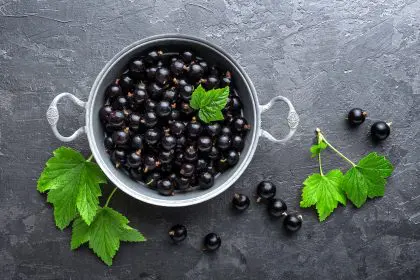Nuts have long been celebrated for their impressive nutritional profiles, offering healthy fats, protein, fiber, and micronutrients in convenient, shelf-stable packages. Yet despite their recognized health benefits, many people experience digestive discomfort after consuming them or miss out on their full nutritional potential. The ancient practice of soaking nuts—a preparation method used across numerous traditional food cultures—addresses these limitations by neutralizing naturally-occurring compounds that interfere with nutrient absorption and digestion. This simple technique transforms nuts from merely nutritious foods into bioavailable powerhouses with enhanced healing properties that support multiple body systems.
The protective compounds in raw nuts
Raw nuts contain several natural protective compounds that serve important functions for the plant but can create challenges for human digestion and nutrient absorption. These compounds develop during seed formation to preserve the nut’s viability until environmental conditions favor germination. Understanding these protective mechanisms reveals why soaking creates such significant changes in nuts’ nutritional properties.
Enzyme inhibitors represent one primary protective compound, particularly prevalent in almonds, walnuts, and pecans. These inhibitors prevent premature sprouting by blocking the enzymatic activity that would otherwise initiate germination. When consumed by humans, these same enzyme inhibitors can interfere with digestive enzymes in the gastrointestinal tract, potentially reducing nutrient breakdown and absorption while creating digestive discomfort for sensitive individuals.
Phytic acid, technically a stored form of phosphorus, serves as another protective compound found predominantly in the outer layers of nuts. This molecule binds readily to minerals including calcium, zinc, iron, and magnesium, forming insoluble complexes that prevent these nutrients from being properly absorbed during digestion. This binding capacity explains why consuming large amounts of unsoaked nuts can actually contribute to mineral deficiencies despite their impressive mineral content on paper.
Tannins, polyphenolic compounds that create astringency and bitterness, provide additional protection in many nut varieties. While tannins offer certain health benefits in appropriate amounts, their concentrated presence in raw nuts can interfere with protein digestion and cause digestive discomfort in sensitive individuals. These compounds are particularly prevalent in walnuts, pecans, and hazelnuts, contributing to their slightly bitter flavor notes.
The biochemical transformation during soaking
When nuts are soaked in water, a remarkable series of biochemical changes occurs that mimics the early stages of germination. The contact with water triggers the nut to prepare for growth by neutralizing its protective compounds and activating beneficial enzymes. This process essentially tricks the nut into behaving as if it were about to sprout, initiating internal changes that significantly alter its nutritional profile.
Enzyme inhibitors begin breaking down within the first few hours of soaking as the nut prepares its internal machinery for growth. This neutralization process continues throughout the soaking period, with different nuts requiring varying amounts of time for optimal results—almonds and walnuts typically need 8-12 hours, while smaller varieties like cashews require only 2-4 hours. The deactivation of these inhibitors not only improves digestibility but also allows the nut’s own beneficial enzymes to activate.
Phytic acid undergoes partial neutralization during soaking through the activation of an enzyme called phytase, which naturally occurs in small amounts within nuts. This enzyme breaks the bonds between phytic acid and minerals, releasing previously bound nutrients and making them available for absorption. The addition of salt to the soaking water enhances this process by creating an ionic environment that supports enzymatic activity and draws out additional antinutrients from the nuts.
Tannins and other water-soluble antinutrients leach directly into the soaking water, as evidenced by the brown coloration that develops during the soaking process, particularly noticeable with walnuts and pecans. This leaching effect removes a significant portion of these potentially irritating compounds from the nut, reducing their astringency and improving both digestibility and flavor profiles. The visible color change in the soaking water provides tangible evidence of this beneficial transformation.
Enhanced mineral bioavailability
The neutralization of phytic acid during soaking creates one of the most significant nutritional benefits: dramatically improved mineral bioavailability. Raw nuts contain impressive amounts of essential minerals on paper, but the high phytic acid content means much of this nutritional value remains locked away during digestion. Soaking changes this equation substantially, allowing the body to access more of these critical nutrients.
Zinc availability increases particularly dramatically after proper soaking, with studies showing absorption rates improving by 30-50% in properly prepared nuts compared to their raw counterparts. This enhanced zinc accessibility supports immune function, DNA synthesis, wound healing, and protein structure throughout the body. Given that zinc deficiency affects an estimated two billion people globally, this improved bioavailability represents a significant health benefit.
Magnesium—abundant in most nut varieties and critical for over 300 enzymatic reactions in the body—similarly becomes more bioavailable after soaking. This essential mineral plays key roles in muscle function, nerve transmission, blood glucose control, and blood pressure regulation. The improved access to magnesium through soaked nuts may partially explain their enhanced benefits for cardiovascular and neurological health compared to unsoaked varieties.
Iron and calcium absorption likewise improve with reduced phytic acid levels, though the effect varies somewhat by nut variety. Almonds show particularly significant increases in calcium bioavailability after soaking, while walnuts demonstrate greater improvements in iron accessibility. These mineral-specific effects highlight the importance of consuming a variety of properly prepared nuts rather than focusing exclusively on a single type.
Protein digestibility improvements
Proteins in nuts exist in complex three-dimensional structures that can be challenging for digestive enzymes to break down efficiently. Soaking initiates subtle changes in these protein structures, essentially beginning the pre-digestion process before consumption. This partial unfolding of protein molecules makes them more accessible to digestive enzymes in the gastrointestinal tract.
The deactivation of enzyme inhibitors during soaking further supports protein digestion by allowing digestive enzymes to function at full capacity. Trypsin inhibitors—compounds that specifically block protein-digesting enzymes—decrease significantly during proper soaking, particularly in almonds and walnuts. This reduction allows the body’s natural protein-digesting enzymes to work more effectively, increasing the amount of amino acids extracted and absorbed from the nuts.
This improved protein accessibility explains why many people report feeling more satisfied after consuming soaked nuts compared to raw varieties. The enhanced digestion allows the body to extract more usable amino acids from the same quantity of food, providing greater nutritional value from each serving. For individuals following plant-based diets, this improved protein availability makes soaked nuts an even more valuable protein source.
For those with digestive sensitivities, the protein structure changes during soaking can significantly reduce digestive distress. Many individuals who experience gas, bloating, or discomfort after eating raw nuts find they can tolerate properly soaked varieties without issue. This improved digestibility makes nuts accessible to more people as valuable nutrient sources, allowing those with sensitive digestive systems to benefit from their nutritional properties.
Beneficial enzyme activation
Perhaps the most fascinating transformation during nut soaking involves the activation of beneficial enzymes naturally present within the nut itself. In their dormant state, raw nuts contain numerous enzymes in inactive form, awaiting the right conditions to initiate germination. The soaking process provides the moisture these enzymes need to begin converting stored nutrients into more bioavailable forms, essentially beginning a gentle pre-digestion process.
Lipase—an enzyme that breaks down fats—activates during soaking and begins transforming the nut’s stored fats into more digestible forms. This enzymatic activity makes the nut’s healthy fats more readily available to the body and reduces the workload on the digestive system. For individuals with suboptimal fat digestion or gallbladder issues, this pre-digestion can significantly improve the tolerability of nuts’ healthy fats.
Amylase enzymes that break down complex carbohydrates similarly activate during soaking, beginning the conversion of starch molecules into simpler forms. This partial breakdown makes the carbohydrates in nuts more easily processed by the body and helps modulate their impact on blood sugar levels. The result is improved energy availability without the dramatic blood sugar fluctuations that might occur with less digestible carbohydrate sources.
Protease enzymes that initiate protein breakdown also activate during the soaking process, complementing the structural changes previously discussed. These enzymes begin breaking the bonds between amino acids, creating shorter peptide chains that require less digestive effort to process fully. This enzymatic pre-digestion contributes significantly to the improved protein bioavailability observed in properly soaked nuts.
Fatty acid preservation and enhancement
The healthy fats in nuts represent one of their most valuable nutritional attributes, yet these delicate compounds face potential damage during many food preparation methods. Soaking offers the remarkable benefit of preserving these beneficial fatty acids while simultaneously making them more bioavailable. Unlike roasting, which can damage heat-sensitive omega-3 fatty acids, soaking maintains fatty acid integrity while enhancing their digestibility.
The enhanced activity of naturally-occurring lipase enzymes during soaking creates more free fatty acids within the nut, making these nutrients more readily available for absorption. This pre-digestion effect proves particularly beneficial for omega-3 fatty acids in walnuts, one of the richest plant sources of these anti-inflammatory compounds. The improved availability may enhance the documented cardiovascular and neurological benefits associated with regular nut consumption.
For individuals with compromised fat digestion, the enzymatic changes during soaking can make a substantial difference in how efficiently they absorb and utilize nuts’ healthy fats. This improved availability may enhance the documented cardiovascular and neurological benefits associated with regular nut consumption, particularly for those who might otherwise struggle to digest these beneficial compounds efficiently.
The fatty acid transformations during soaking also contribute to improved flavor profiles in many nut varieties. The partial breakdown of fats leads to the development of more complex flavor notes, particularly in varieties like pecans and walnuts. This enhancement creates a more satisfying eating experience while simultaneously delivering greater nutritional value—a rare combination in food preparation methods.
Antioxidant availability increases
Nuts naturally contain impressive amounts of various antioxidant compounds, yet the bioavailability of these protective substances varies significantly depending on preparation methods. Soaking appears to enhance the accessibility of certain antioxidant classes while preserving heat-sensitive varieties that might be damaged during roasting or other thermal processing.
Polyphenolic compounds, particularly abundant in walnuts and pecans, undergo structural changes during soaking that may enhance their absorption and utilization. While some water-soluble polyphenols leach into the soaking water, the majority remain within the nut in forms that demonstrate improved bioavailability in digestive simulation studies. This enhancement supports the nut’s ability to combat oxidative stress and inflammation when consumed.
Vitamin E compounds (tocopherols and tocotrienols), particularly abundant in almonds and hazelnuts, remain well-preserved during soaking unlike during heat processing, which can degrade these heat-sensitive nutrients. Additionally, the improved fat digestion from activated lipase enzymes enhances the absorption of these fat-soluble antioxidants, potentially increasing their beneficial effects on cellular membranes and cardiovascular health.
The selenium content in Brazil nuts—the richest known food source of this important antioxidant mineral—becomes more bioavailable through proper soaking techniques. A single properly soaked Brazil nut can provide optimal daily selenium intake with better absorption than its raw counterpart, supporting thyroid function, immune response, and cellular protection against oxidative damage.
Specific benefits by nut variety
Different nut varieties respond to soaking in unique ways, with certain types showing more dramatic transformations than others. Understanding these differences allows for optimized preparation methods tailored to each nut’s specific characteristics and potential health benefits.
Almonds demonstrate some of the most significant changes during soaking, with substantial reductions in enzyme inhibitors and phytic acid levels. Their naturally high enzyme content becomes activated during the process, greatly improving digestibility and nutrient availability. The enhanced mineral bioavailability particularly affects calcium and magnesium, supporting bone health and muscle function. Properly soaked almonds develop a subtly sweeter flavor and tender texture that many people find more appealing than their raw counterparts.
Walnuts, with their notably high phytic acid and tannin content, benefit dramatically from proper soaking. The process significantly reduces their astringency and bitter notes while preserving their valuable omega-3 fatty acids. The enhanced bioavailability of these anti-inflammatory compounds supports brain health and cognitive function more effectively than unsoaked varieties. The visible brown coloration that develops in walnut soaking water provides clear evidence of antinutrient removal during the process.
Cashews require more careful soaking approaches due to their different composition. Their lower phytic acid content means they benefit from shorter soaking periods (generally 2-4 hours) compared to other varieties. Extended soaking can actually compromise their texture and flavor profile without providing additional nutritional benefits. Their naturally sweeter taste becomes more pronounced with proper soaking, while their significant copper and magnesium content becomes more bioavailable.
Brazil nuts, with their extraordinary selenium content, require specific soaking considerations to maximize benefits while preventing potential issues. Their high fat content makes them susceptible to rancidity if soaked for extended periods in warm environments. A shorter soaking time of 4-6 hours optimizes enzyme activation and antinutrient reduction while preserving fatty acid integrity. The enhanced selenium bioavailability after proper soaking supports thyroid function and antioxidant defense systems more effectively than raw consumption.
Practical soaking methods for maximum benefit
Implementing effective nut soaking techniques requires understanding several key variables that influence the outcome. The optimal approach balances maximum nutritional enhancement with practical considerations and food safety practices to unlock the full potential of these nutrient-dense foods.
The soaking medium plays a crucial role in antinutrient neutralization effectiveness. While plain filtered water initiates the process, adding a small amount of natural salt (approximately 1 tablespoon per quart of water) creates an ionic solution that enhances enzyme activation and draws out more antinutrients from the nuts. Some traditional methods alternatively use a small amount of acidic medium like lemon juice or apple cider vinegar (1-2 tablespoons per quart) to further support phytic acid breakdown, particularly effective for almonds and walnuts.
Temperature significantly influences both the speed and effectiveness of the soaking process. Room temperature water (about 70°F/21°C) provides the optimal environment for enzyme activation without risking bacterial growth during longer soaking periods. Colder temperatures slow the beneficial transformations, while warmer environments can potentially support unwanted bacterial proliferation during extended soaking. During summer months or in warm climates, consider refrigerating nuts during longer soaking periods after an initial few hours at room temperature.
Soaking duration varies substantially between nut varieties based on their size, density, and specific antinutrient content. High-phytate nuts like almonds and walnuts benefit from longer periods (8-12 hours), while cashews and macadamias achieve optimal results with shorter durations (2-4 hours). Extending soaking beyond these recommended times rarely provides additional benefits and may actually compromise texture or flavor in some varieties. For convenience, overnight soaking works well for most varieties that require longer processing.
Post-soaking handling significantly affects both the nutritional value and safety of the prepared nuts. Thoroughly rinsing after soaking removes residual antinutrients and any potentially developed surface bacteria. For immediate consumption, properly soaked and rinsed nuts can be enjoyed directly. For storage, gentle dehydration at low temperatures (below 115°F/46°C to preserve enzymes) creates shelf-stable results that maintain the benefits of soaking while preventing spoilage. Properly dried soaked nuts can be stored in airtight containers for 1-2 weeks at room temperature or several months refrigerated.
The combination of traditional wisdom and modern nutritional understanding reveals why the simple practice of soaking nuts creates such profound changes in their healing potential. By neutralizing antinutrients, activating enzymes, and enhancing nutrient bioavailability, this ancient preparation method transforms ordinary nuts into therapeutic foods with enhanced digestibility and nutritional value. For those seeking to maximize the benefits of these nutrient-dense foods, the small additional effort of proper soaking offers substantial returns in both culinary enjoyment and health-supporting properties.

















